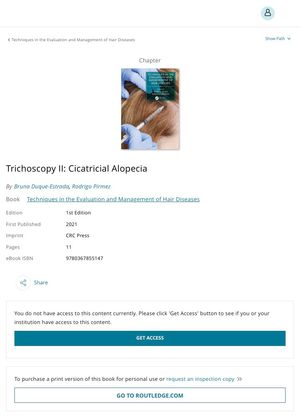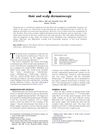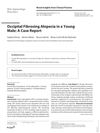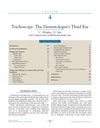Trichoscopy II: Cicatricial Alopecia
March 2021
in “
CRC Press eBooks
”

TLDR Trichoscopy helps tell apart Lichen planopilaris and Frontal fibrosing alopecia from other hair loss conditions.
The document discusses trichoscopy of primary cicatricial alopecias, focusing on Lichen planopilaris (LPP) and Frontal fibrosing alopecia (FFA). LPP, a follicular form of lichen planus, mainly affects adults and can cause patchy or diffuse hair loss. Its inflammatory process is folliculocentric, with disease activity signs showing a follicular or perifollicular pattern on the scalp. A unique feature of LPP is the formation of tubular structures, or hair casts, where scaling embraces hair follicles. FFA primarily affects postmenopausal women, characterized by a progressive band of alopecia on the frontal/frontotemporal scalp. Trichoscopy is crucial in differentiating FFA from other hair disorders like alopecia areata, traction alopecia, and androgenetic alopecia. Disease activity signs in FFA are similar to LPP, including perifollicular erythema and scaling.







